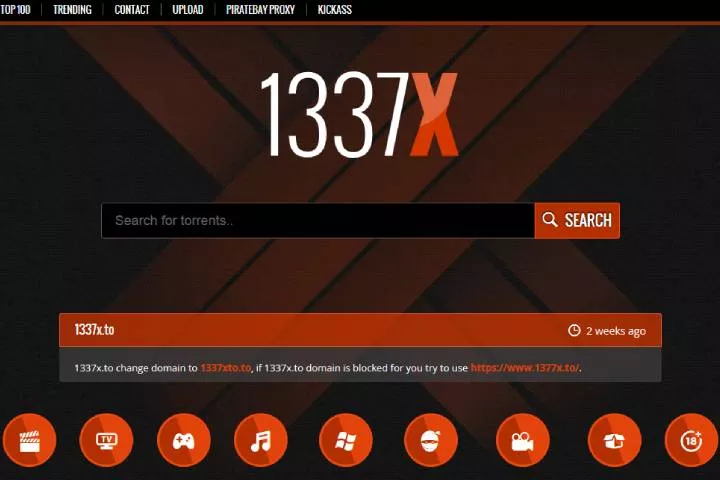Business
Are You Getting the Most Out of Your Plagiarism Checker Software?
Plagiarism checker software is a serious offense, regardless of the field you are operating in. It means different things in diverse sectors.

1. What is plagiarism?
Plagiarism is a serious offense, regardless of the field you are operating in. It means different things in diverse sectors. The common thread is that it is a crime. In the world of content writing, it means reproducing words and ideas of others without proper citations. Reproducing ideas, designs, images, and names without providing the proper credits constitutes plagiarism in the realm of intellectual property, viz. patents, copyrights, trademarks, and related fields.
The problem of plagiarism took off to great heights with the advent of the internet. According to one estimate, there were about 47 billion web pages on the internet back in the year 2016 itself!
Now, the law places great emphasis on intent. The courts or whoever the judicial authority is, will award you heavy punishment if the other party proves criminal intent, i.e., that you deliberately executed an illegal activity. However, if you can prove that you committed the crime unintentionally, you get off with a light sentence.
Regardless of what your intentions were, you are punished. Plagiarism can cost you dearly in any field. And it should be that way. After all, a properly implemented idea can be worth hundreds of thousands, if not more. Besides, it is unethical to copy without citing the actual source, for the rights holder has worked hard and smart over a considerable period of time to bring his or her idea to fruition.
2. How Does Plagiarism Checker Software Work?
Plagiarism checker software is a great way to verify that you have not reproduced the exact words of some other author, unintentionally, of course. The software has its own database of known websites and web pages. In order to identify instances of plagiarism, it checks if the content in the document under question matches that on any of the web pages in the database.
Now, the software does not look for the same words. It hunts for the same strings of words, i.e. 3–4 words or more. Therefore, if you are a writer, make it a point not to reproduce 3 or more words in the same sequence as in the source webpage. “3 words in a sequence” is one of the thumb rules in content writing that fresh writers are asked to adhere to.
You can, of course, use such matching strings in quotes. But, including multiple quotes is not considered a good practice unless the same is necessary for the article. Even if you paraphrase correctly, attribution is a must. For non-academic content, hyperlinks are generally an acceptable form of attribution. Academic content, however, requires attribution via citation in some format (MLA, APA, Chicago, Harvard, or some other).

3. Features of an Excellent Plagiarism Checker
Before you purchase and install software for checking plagiarism, ensure that it has the following attributes:
Wide Sourced:
As mentioned earlier, software for identifying plagiarism scans billions of web pages in its database and looks into the results of numerous search engines to check if a string of words is repeated. Therefore, the more relevant web pages it has in its database, the more accurate its results will be.
Examine how many search engines the software considers as well as the number of related webpages and websites it has in its database. You do not want to end up in a situation where content certified as original by the software you purchase gets branded and plagiarized by another software with a larger database.
Does Not Plagiarize:
Some free plagiarism-checking software imposes a hidden cost. What is worse, these atrocious provisions are mentioned in the Terms and Conditions section. For example, the software might say that you grant them all the rights over the content that you paste in their box for checking plagiarism. Another might say they can use the content in any way they wish to while you retain the rights.
Be as it may, such software is a plagiarism trap—doing exactly the opposite of what it should. The devil is always in the detail. Read the fine print before you use any such software, even for an innocuous-looking plagiarism scan.
Clearly Worded Plagiarism Report:
The software must provide all the relevant information, such as:
- Percentage of similarity (with other webpages/websites) along with the URL for such pages.
- The exact words in your document are similar to those in the original web pages, along with a URL for the latter. Preferably, the marking must be highlighted for easy identification.
- Directions on what to do next. That is to say, the report must not make you seek additional information from elsewhere on the course of action necessary to avoid plagiarism after you publish your document.
Check for Similarity in Different Articles You Have Written:
Not only should the software check for similarity between your content and the webpages in its database, but also between different articles you have composed. Sometimes, you have to write on different facets of the same topic. In such cases, there will be some overlap in the content between two or more such articles, despite your best efforts.
Your concern should be that, although the information that the words deliver is somewhat similar, the words themselves are different. And the software should help you determine whether the same is indeed the case.
Numerous file formats:
The plagiarism software must be equally efficient in checking duplicate content inside documents in various formats. After all, you will not be composing your reports in MS Word format alone. Files can be in pdf, txt, html, and other such formats. And copy-pasting large volumes of content from the document to the software is not practical.
Customizable:
Some articles require intensive plagiarism checking, and others are okay with nominal checks. Check if the settings of the software enable you to modify the number of search engines that are referenced when checking for plagiarism. There is no point in using a microscope to scan, as a simple magnification lens can.
Facility to Download or Share Plagiarism Reports:
If you are a student or a writer, you will want to share the plagiarism report with your tutor or employer. As an employer, you will like your writer to share the report with you or the editor. Either way, the feature to download and/or share reports is important to ensure transparency.
Finally
By helping you check if your content is similar to that on other web pages on the internet, software for plagiarism checking does a great service. You can focus on writing and let the software do the checking.
Business
Navigating the Process of Selling Deceased Estate Shares
This article aims to provide a comprehensive guide to selling shares from a deceased estate. Process of Selling Deceased Estate Shares.

Table of Contents
1. Understanding the Basics of Selling Deceased Estate Shares
Dealing with a deceased estate can be a challenging and emotional process, especially when it comes to handling financial assets like shares. This article aims to provide a comprehensive guide to selling shares from a deceased estate.
2. What are Deceased Estate Shares?
Deceased estate shares refer to the stocks and shares that were owned by an individual who has passed away. These shares become part of the deceased’s estate and are subject to the terms of their will or estate plan.
3. The Importance of Valuing the Shares
The first step in selling deceased estate shares is to obtain a current valuation. This valuation is crucial for several reasons: it helps in distributing the estate among beneficiaries, it may be necessary for tax purposes, and it gives an idea of the market value of the shares.
4. Legal Requirements and Executor Responsibilities
The executor of the estate plays a pivotal role in the management and distribution of the deceased’s assets. This section will cover the legal responsibilities and steps the executor needs to take to lawfully sell the shares.
5. Obtaining Probate
Before any action can be taken with the shares, it’s often necessary to obtain probate. Probate is a legal process that confirms the executor’s authority to deal with the deceased’s assets.
Transferring Shares into the Executor’s Name
Once probate is granted, shares may need to be transferred into the name of the executor. This process varies depending on the company and the type of shares.
6. The Process of Selling Shares
After completing legal formalities, the executor can proceed with selling the shares. This section will outline the steps involved in this process, including choosing a brokerage or financial service, understanding market conditions, and making informed decisions.
Deciding on the Right Time to Sell
Timing can significantly impact the returns from selling shares. Executors need to consider market conditions and financial advice to determine the best time to sell.
Completing the Sale
This subsection will detail the actual process of selling shares, including placing orders, handling transaction fees, and ensuring all regulatory requirements are met.

7. Navigating Tax Implications and Reporting
Managing tax obligations is a critical aspect of selling deceased estate shares. This section will explain the potential tax implications and the importance of accurate reporting for both capital gains tax and inheritance tax considerations.
Understanding Capital Gains Tax Responsibilities
When shares are sold, any profit made from the time of the deceased’s passing to the sale date may be subject to capital gains tax. Executors need to be aware of these implications and plan accordingly.
Inheritance Tax Considerations
In some jurisdictions, the value of the deceased estate’s shares might impact inheritance tax calculations. It’s essential for executors to understand these aspects in order to ensure compliance with tax laws.
8. Common Challenges and How to Overcome Them
Selling deceased estate shares can present unique challenges. This section will discuss common issues such as disputed wills, fragmented information about the shares, and market volatility.
Dealing with Disputed Wills and Beneficiary Disagreements
Disputes over the will or disagreements among beneficiaries can complicate the process. Executors must handle these situations delicately and legally.
Managing Market Volatility
Shares can be subject to market fluctuations. Executors should be prepared for this volatility and may need to consult financial advisors to navigate these waters effectively.
9. Tips for Executors Handling Deceased Estate Shares
This section will provide practical advice for executors, including the importance of seeking professional advice, keeping thorough records, and communicating clearly with beneficiaries.
Seeking Professional Financial and Legal Advice
The complexity of selling shares from a deceased estate often necessitates professional advice. This can range from legal counsel to financial advisory services.
Record Keeping and Communication with Beneficiaries
Maintaining transparent and thorough records is crucial. Executors should also prioritize clear and consistent communication with all beneficiaries to avoid misunderstandings.
Conclusion
Selling shares from a deceased estate is a responsibility that requires careful attention to legal, financial, and interpersonal dynamics. By understanding the process, staying informed about tax obligations, and tackling challenges head-on, executors can fulfill their duties effectively and respectfully.

 Instagram3 years ago
Instagram3 years agoBuy IG likes and buy organic Instagram followers: where to buy them and how?

 Instagram3 years ago
Instagram3 years ago100% Genuine Instagram Followers & Likes with Guaranteed Tool

 Business5 years ago
Business5 years ago7 Must Have Digital Marketing Tools For Your Small Businesses

 Instagram4 years ago
Instagram4 years agoInstagram Followers And Likes – Online Social Media Platform





















